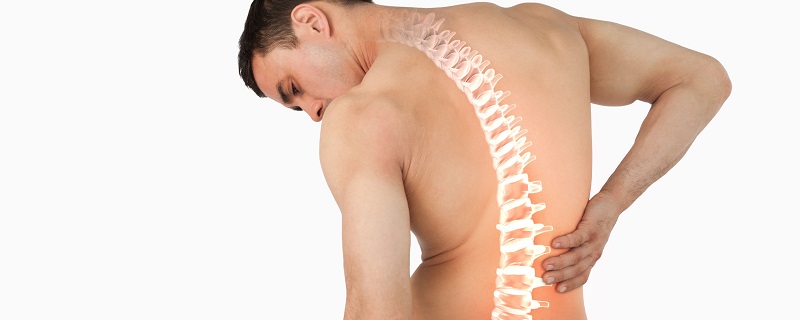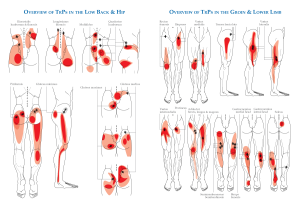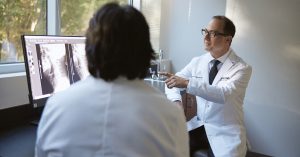What Is Kissing Spine? – Dr. Stefano Sinicropi, M.D.

Category: | Author:
Most kisses are good, but one area where you don’t want to hear about kissing is in your spine. Kissing spine, also more commonly referred to as Baastrup’s sign or Baastrup’s syndrome, is a condition that involves your intervertebral discs and spinal facet joints. We take a closer look at what causes kissing spine to develop and how Dr. Sinicropi can help you treat the condition.
Understanding Kissing Spine
Baastrup’s sign was named after Christian Ingerslev Baastrup, who first described the condition back in 1933. The condition occurs when the spinous processes of two adjacent vertebrae end up coming in contact with one another. Your spinal processes are thin, bony projections that extend off the back of each of your vertebrae. This touching or “kissing” of the spinal processes is how the condition earned the moniker kissing spine.
Kissing spine is most likely to develop in your lower back, with a touching of the spinal processes being most common between the L4 and L5 segment. Although it is rare, kissing spine can also develop in the neck region between cervical vertebrae. Researchers say that some common factors that can contribute to vertebrae hypermobility and kissing spine include aging, natural disc degeneration, poor posture habits, obesity, underlying spinal conditions and trauma or injury to the area. At its core, kissing spine is caused by spinal disc degeneration, allowing for more vertebral shifting and mobility.
Symptoms of kissing spine include:
- Pain in the affected region
- Pain that worsens when arching your back
- Pain that is relieved when rounding your back
- Swelling/Inflammation
- Sensitivity/Tenderness
- Radiating discomfort in the arms or legs
- Weakness in the extremities
Diagnosing And Treating Kissing Spine
If you are dealing with any of the above symptoms, especially if you are over the age of 60, consider having a conversation with your primary care provider or a spine specialist at your next appointment. Because a number of different spinal issues can cause similar symptoms, sometimes it is difficult to hone in on a diagnosis of Baastrup’s sign. Your description of symptoms, your medical history, a physical exam and imaging tests can help to detect the presence of kissing spine. X-rays may be able to show that the spinal processes are touching, but an MRI or CT scan can help tell them more about the degenerative changes in the spinal disc, which is the root issue.
If you’ve been diagnosed with kissing spine, your spine specialist will go over some common treatment options. In most cases, symptoms can be effectively managed using non-operative techniques. The majority of the time, you can get symptoms under control by pursuing a combination of the following techniques, although none of these treatments will restore lost disc height:
- Pain medications and anti-inflammatories
- Exercise
- Weight loss
- Posture improvements
- Physical therapy
- Steroid injections
In rare instances where your symptoms are not effectively managed with conservative care, or if disc height loss is too severe, a surgical procedure may be recommended. In those instances, your spine specialist may move forward with an osteotomy, which addresses the bone to correct an alignment issue, or a decompression/removal of the spinal process to eliminate the uncomfortable contact. These procedures typically produce great results, but because conservative techniques typically provide enough relief and because surgery carries additional risks, doctors will first try to solve the issue without the need for an operation.
For more information about kissing spine, or to talk to a provider about a different back issue you’re dealing with, give Dr. Sinicropi and the team at The Midwest Spine & Brain Institute a call today at (651) 430-3800.
Related




